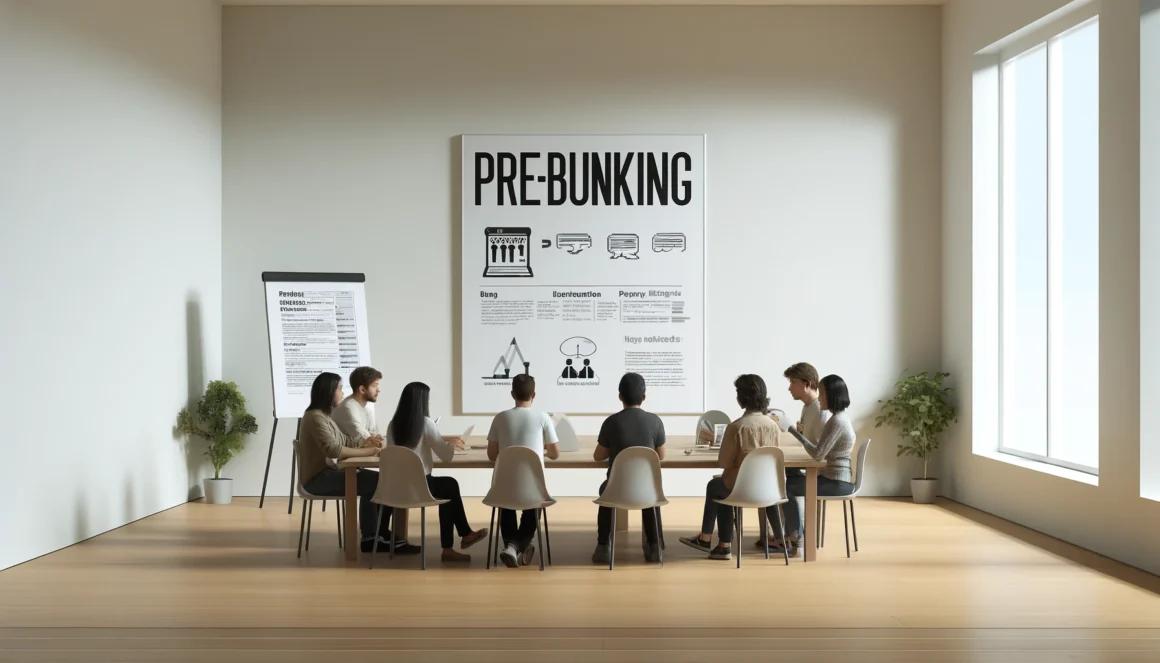In the modern digital landscape, misinformation spreads rapidly, often leading to confusion, mistrust, and societal division. As a technology and solution consulting company, we recognize the crucial role that innovative approaches and technological tools play in combating misinformation. One such approach gaining traction is “prebunking,” a proactive strategy designed to inoculate people against false information before they encounter it. This article explores the concept of prebunking, its importance, and how technology can be leveraged to implement effective prebunking strategies.
What Is Prebunking?
Prebunking, also known as preemptive debunking, is a psychological strategy that aims to build resilience against misinformation by exposing people to weakened versions of misleading information and then refuting it before they encounter the actual misinformation. This concept is rooted in “inoculation theory,” which suggests that just as a vaccine can protect against a virus, pre-exposure to misinformation can bolster one’s ability to recognize and resist it.
Key components of prebunking include:
- Exposure to Misinformation: Presenting individuals with a diluted or less harmful version of the misinformation they might encounter.
- Refutation: Providing clear, factual counter-arguments that debunk the misinformation.
- Explanation of Techniques: Educating people about the methods used to create and spread misinformation, enhancing their ability to spot these tactics in the future.
The Importance of Prebunking
The rapid dissemination of misinformation can have severe consequences, from influencing public opinion and electoral outcomes to undermining public health initiatives and eroding trust in institutions. Traditional debunking efforts, which address false information after it has spread, often struggle to counteract the damage already done. Prebunking, by contrast, offers a proactive solution that aims to prevent misinformation from taking root in the first place.
Benefits of prebunking include:
- Enhanced Resilience: Equipping individuals with critical thinking skills and knowledge to identify and reject false information.
- Reduced Spread of Misinformation: Lowering the likelihood of individuals sharing false information with others.
- Greater Public Trust: Building confidence in reliable sources of information and fostering a more informed public.
Leveraging Technology for Effective Prebunking
Technology plays a pivotal role in the successful implementation of prebunking strategies. By harnessing digital tools and platforms, we can reach a broader audience and tailor prebunking efforts to specific contexts and communities. Here are some ways technology can enhance prebunking initiatives:
- Social Media Campaigns: Utilizing social media platforms to disseminate prebunking content, such as videos, infographics, and interactive quizzes, can reach large audiences quickly. Algorithms can be leveraged to target users who are most likely to encounter misinformation.
- Machine Learning and AI: Advanced algorithms can analyze patterns of misinformation spread and identify emerging threats. Machine learning models can also personalize prebunking messages based on user behavior and preferences, increasing their effectiveness.
- Educational Apps and Games: Developing interactive apps and games that teach users how to recognize and refute misinformation can make prebunking engaging and accessible. These tools can simulate misinformation scenarios and provide real-time feedback.
- Collaborations with Influencers: Partnering with influencers and content creators who have large followings can amplify prebunking messages. Influencers can present prebunking content in relatable and appealing ways, increasing its reach and impact.
- Virtual and Augmented Reality: VR and AR technologies can create immersive experiences that demonstrate the effects of misinformation and the importance of prebunking. These experiences can leave a lasting impression on users, reinforcing the lessons learned.
Case Study: Successful Prebunking Initiatives
Several prebunking initiatives have demonstrated the potential of this approach. For example, a study conducted by researchers at the University of Cambridge developed a game called “Bad News,” where players take on the role of a fake news creator. By exposing players to the tactics used to spread misinformation, the game effectively inoculates them against similar tactics in real life. This interactive and engaging method has shown significant success in improving players’ ability to identify and resist misinformation.
Another example is Google’s Jigsaw project, which developed prebunking video ads that debunk common misinformation tactics. These videos were shown on YouTube and other platforms, reaching millions of users. The results indicated a measurable improvement in viewers’ ability to recognize and reject misinformation.
Conclusion
In an era where misinformation poses a significant threat to societal well-being, prebunking offers a proactive and effective solution. By leveraging technology and innovative strategies, we can build a more resilient and informed public. As a technology and solution consulting company, we are committed to advancing prebunking efforts through cutting-edge tools and approaches, ensuring that our clients and communities are better equipped to navigate the digital information landscape.



